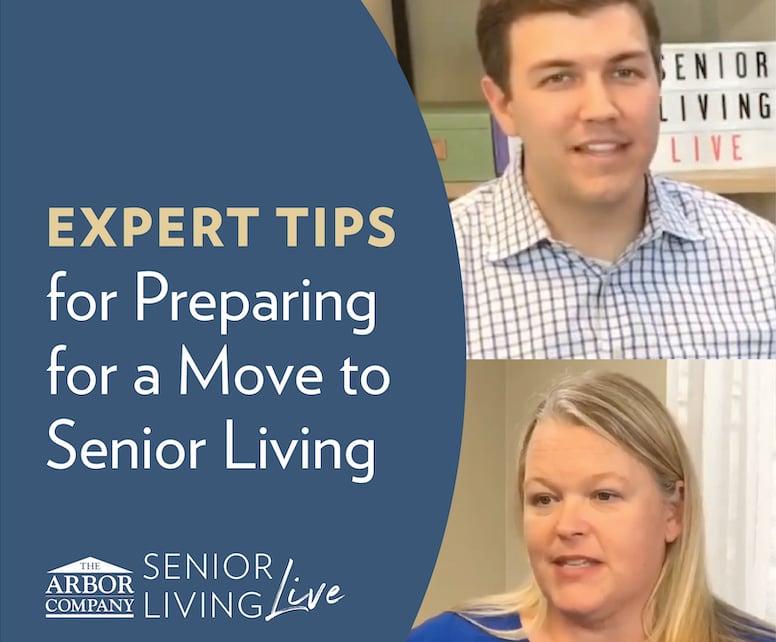 Your loved one has made the decision to move into an assisted living community. More likely than not, you were actively involved in that decision-making process, and both of you are looking forward to having the additional assistance that will give you peace of mind for your loved one’s safety and socialization. However, even with all the excitement of moving into a new space, it is common for your loved one to experience some worries upon transition.
Your loved one has made the decision to move into an assisted living community. More likely than not, you were actively involved in that decision-making process, and both of you are looking forward to having the additional assistance that will give you peace of mind for your loved one’s safety and socialization. However, even with all the excitement of moving into a new space, it is common for your loved one to experience some worries upon transition.
Seniors, in fact, experience more major life transitions than other age groups. Their friends move away or pass away, they stop driving, they move to a new apartment, and they deal with chronic medical conditions that require a comprehensive treatment plan. It is a lot to take in, and moving to a new home can feel like a Herculean task. However, how can you determine if your loved one is happy in a new home or if his or her natural feelings of anxiety will fade away after acclimating to the new apartment? The best way to make sure your loved one is happy in assisted living is to be there during the entire process — from decision-making to move-in to follow-up visits.
Find a good fit
Ensuring your loved one is happy in assisted living starts during the decision-making process. While assisted living communities offer similar care to residents, each community varies greatly in its culture, priorities and amenities. When touring assisted living communities, be vigilant. Take into consideration things like location and nearness to family or friends. Take a look at the community’s activity calendar to see if residents are given the opportunity to socialize, learn and have fun with their peers. These social connections invite friendships, which have been proven to make seniors feel less lonely.
Ensure that the community has caring and attentive staff. You can observe how staff interacts with residents during your tour and subsequent visits, as well as noting if you have the chance to meet the administrator or other key management staff. See if residents appear happy and well cared for, noting if any seniors appear to be disheveled or neglected.
Finally, stop by to participate in an activity or to enjoy a meal at the community. Engaging activities and delicious meals can significantly add to the appeal of a new home, and your loved one should feel there are plenty of things to do around the building with their new friends.
Make it feel like home
Move-in day is an important one, and not just because the move marks a big transition. Move-in day gives you the chance to help your loved one make his or her new apartment feel like home. Beyond placing furniture pieces and making the bed, you have the opportunity to make your loved one’s apartment feel welcoming and cozy.
Frame favorite photos and hang them on the wall, and display photo albums in a place that is easy to reach. Stock the cabinets with favorite place settings and serving dishes that will feel like home when it is time to entertain. Display a few items from a sentimental collection on the coffee table, and hang up a lovely bulletin board to tack up cards from well-wishers.
If your loved one is up for it, attend dinner or an activity that first day. These are excellent ways to meet new neighbors and begin to learn the community’s routine.
Follow up and visit
Once your loved one is set up in his or her new apartment, don’t be a stranger. If you live nearby, try to visit often during those first few weeks. You are a touchstone of comfort and familiarity for your loved one; even a quick stop on your way home from work to see how things are going can be a bright spot in his or her day. If you live farther away, you can make it a point to call or video chat at a designated time every few days to see how your loved one is faring in his or her new home.
No matter where you live, be sure you have a copy of the community’s newsletter and activity calendar. This way, you can stay up on what is happening in the community and encourage your loved one to check out upcoming events. Your suggestions and encouragement can go a long way in helping your loved one find the confidence to meet new people and try new things, both of which will help during this transition.
Be patient
Finally, transition takes time and requires patience on your part and on the part of your loved one. If your loved one talks about being lonely or sad, resist the urge to hurry to a more pleasant subject. Instead, validate those feelings before redirecting your loved one to a possible solution. Your loved one will feel heard and more likely to listen to your suggestions. If your loved one seems discontent, contact the community. Exceptional communities will have staff members who are trained to positively intervene and check in on your loved one, extending another helping hand and offering more encouragement. You will both get through this transition soon enough!







